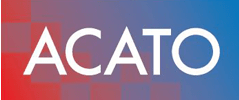Explore ISO 9001 Certification Costs Across South America

What Drives ISO 9001 Certification Cost Variance in South America?
ISO 9001 certification fees can differ by more than 50% across South America, creating budget uncertainty for companies pursuing quality management accreditation. Understanding the underlying drivers of iso 9001 price difference in south america empowers executives to plan accurately, allocate resources efficiently, and avoid unexpected expenses. This guide examines the main cost factors, compares fees across key countries, outlines typical spending components, presents strategies to optimize outlays, and highlights why cost transparency is critical for business success in the region.
Key Factors Influencing ISO 9001 Certification Costs in South America
ISO 9001 certification cost variance stems from a combination of organizational attributes, certifier ecosystems, and system intricacies. Companies experience different pricing because of scale, industry complexity, choice of accreditation body and the scope of their quality management system. For example, a small textile manufacturer in Peru may incur lower audit fees than a multinational mining firm in Chile due to simpler processes and reduced audit hours.
British Assessment Bureau, How Much Does ISO 9001 Certification Cost? (2024)
Factors Affecting ISO 9001 Certification Costs
The cost of ISO 9001 certification is influenced by various factors, including company size, operational complexity, and the choice of certification body. Larger organizations and those in complex industries often face higher fees due to the need for more extensive audits.
How Do Company Size and Industry Influence Certification Pricing?
Larger organizations and sectors with stringent compliance standards typically face higher certification fees because they require more extensive evaluation.
- Employee Count and Turnover – Organizations with over 250 staff often need multiple audit days, increasing both auditor fees and logistical costs.
- Operational Complexity – Industries such as oil & gas or pharmaceuticals demand specialized auditors, translating to premium rates.
- Geographical Spread – Multisite operations incur travel expenses and extended on-site auditing for each facility.
BPR Hub, ISO 9001 Certification Cost for Small Businesses – 2025 Guide (2025)
ISO 9001 Certification Cost for Small Businesses
The size and complexity of a business significantly impact certification costs, with larger organizations and those with multiple locations typically incurring higher expenses. The choice of certification body also affects costs, as fees can vary based on their reputation and audit processes.
These factors drive auditors to allocate additional time and resources, leading into how certifier selection further shapes costs.
What Role Does Certification Body Selection Play in Cost Differences?
Choosing an accredited registrar affects fees through brand reputation, auditor expertise and regional presence.
- Established bodies with global credentials charge higher daily rates but offer streamlined processes.
- Local registrars may provide competitive fees yet vary in audit rigor.
- Joint accreditation schemes for multiple standards deliver package discounts or bundled pricing.
Selecting a registrar balances cost versus audit quality and regional support, which leads to examining system scope and complexity next.
How Does the Scope and Complexity of Quality Management Systems Affect Costs?
The broader and more intricate a QMS, the greater the audit effort required.
- Process Count – More documented processes increase audit checklist items.
- Integrated Standards – Combining ISO 9001 with ISO 14001 or ISO 27001 adds audit modules.
- Documentation Depth – In-depth procedure manuals and risk assessments extend preparation and review times.
Complex systems demand detailed auditor scrutiny, setting the stage for regional cost comparisons across South America.
How Does ISO 9001 Certification Cost Vary Across Different South American Countries?
Certification fees differ regionally due to local economies, regulatory frameworks and auditor availability. Brazil, Argentina and Chile illustrate this variance clearly by exhibiting distinct price benchmarks and market dynamics.
What Are the Cost Differences Between Brazil, Argentina, and Chile?

Below is a comparison of average audit fees and typical ranges for initial ISO 9001 certification in these key markets.
| Country | Average Audit Fee (USD) | Typical Range (USD) |
|---|---|---|
| Brazil | 4,500 | 3,000–6,500 |
| Argentina | 3,800 | 2,500–5,500 |
| Chile | 4,200 | 3,000–6,000 |
Certification costs in Argentina tend to be lowest, while Brazil’s larger market size results in more varied pricing. These country benchmarks reflect broader economic influences and regulatory requirements.
TopCertifier, ISO Certification in Brazil (2025)
ISO 9001 Certification in Brazil
ISO 9001 certification costs in Brazil can vary based on factors such as company size, the complexity of the business, and the choice of certification body. The cost is also influenced by whether the company operates in multiple shifts or locations.
Factocert, ISO Certification in Argentina (2025)
ISO Certification in Argentina
The cost of ISO certification in Argentina is influenced by the size of the organization, the type of ISO certification, and the use of consultants. The cost is considered competitive and affordable.
Vertex Certifiers, ISO Certification Services in Chile (2025)
ISO Certification Services in Chile
ISO 9001 certification is widely pursued by businesses across diverse industries in Chile. The cost of certification depends on the size and complexity of the organization.
How Do Local Economic Conditions and Regulations Impact Certification Fees?
Regional inflation, labor rates and government standards shape auditor tariffs and operational expenses.
- Currency Volatility often forces registrars to adjust fees quarterly.
- Labor Market Costs in high-wage economies push daily auditor rates upward.
- Regulatory Stringency such as mandatory sector audits can require additional verification steps.
Economic and legal factors therefore compound baseline audit fees, guiding us to examine core cost components next.
What Are the Typical Cost Components Included in ISO 9001 Certification in South America?
9000 Store, Cost of ISO 9001 Certification (2025)
Understanding ISO 9001 Certification Expenses
The total cost of ISO 9001 certification includes expenses for preparation, training, documentation, internal audits, and certification audit fees. Initial certification audits and annual surveillance audits are key components of the overall cost.
How Much Do Initial Audits and Surveillance Audits Usually Cost?
Initial certification and annual surveillance represent two primary audit phases:
- Initial Certification Audit – Typically 2–5 days, ranging from USD 3,000 to USD 7,000 depending on scope.
- Surveillance Audits – Annual follow-up visits cost USD 1,500 to USD 3,500, ensuring continued compliance.
These audit expenses form the foundation of certification spending and transition into supplementary cost elements.
What Are the Additional Costs for Training and Consulting Services?
Organizations often invest in external expertise to accelerate readiness and system design.
- Management system documentation workshops may cost USD 1,000 to USD 3,000.
- Specialized ISO 9001 training courses range from USD 500 to USD 2,500 per session.
- Consulting packages for gap analysis and implementation support can add USD 5,000 to USD 10,000, according to “ISO 9001 Certification Cost – Acato.co.uk.”
Combining audit fees with these services reveals the full certification investment and informs how companies can optimize expenditure.
How Can Companies Optimize and Manage ISO 9001 Certification Costs Effectively?

Strategic planning, process streamlining and internal capacity building help firms reduce unnecessary spending while maintaining robust quality management.
What Are Best Practices for Reducing Certification Expenses Without Compromising Quality?
Implementing targeted measures can lower costs without weakening standards:
- Conduct Pre-Audit Self-Assessments to identify gaps and avoid multiple audit days.
- Standardize Documentation Templates for efficiency and faster auditor review.
- Leverage Integrated Audits by combining ISO 9001 with related standards to secure bundle discounts.
Qualio, How much does ISO 9001 certification cost? (2023)
ISO 9001 Certification Cost
Companies can optimize certification costs by conducting pre-audit self-assessments, standardizing documentation, and leveraging integrated audits. Investing in internal resources, such as employee training and a dedicated QMS team, can also reduce reliance on external consultants and audit time.
These practices cut down external fees and improve audit readiness, setting up stronger internal preparation.
How Does Internal Preparation Influence Overall Certification Cost?
Investing in in-house resources reduces reliance on paid consultants and audit time:
- Employee Training equips staff to handle process audits, decreasing auditor involvement.
- Dedicated QMS Team ensures consistent documentation maintenance and rapid corrective action.
- Pilot Audits uncover compliance issues early, preventing costly re-audits.
Proactive readiness accelerates certification and minimizes surprises, paving the way to appreciate why cost awareness matters.
Why Is Understanding ISO 9001 Certification Cost Variance Important for South American Businesses?
Cost variance awareness empowers businesses to forecast budgets accurately, compare provider offers effectively, and align certification timing with strategic objectives.
How Does Cost Transparency Improve Certification Planning and Budgeting?
Clear insight into fee drivers and component breakdowns delivers multiple benefits:
- Enables precise financial forecasting and cash-flow management.
- Facilitates competitive registrar selection through apples-to-apples cost comparisons.
- Supports timely resource allocation for audits, training and system implementation.
Transparent costing thus underpins confident decision-making and efficient project execution.
What Are the Risks of Underestimating Certification Costs?
Failing to account for full certification expenses can lead to:
- Budget Overruns causing delayed rollouts or funding shortfalls.
- Compromised Quality if corners are cut on necessary training or documentation.
- Re-audit Penalties in cases of non-conformities requiring additional auditor visits.
Recognizing these pitfalls highlights the critical value of comprehensive cost analysis for sustainable ISO 9001 success in South America.

